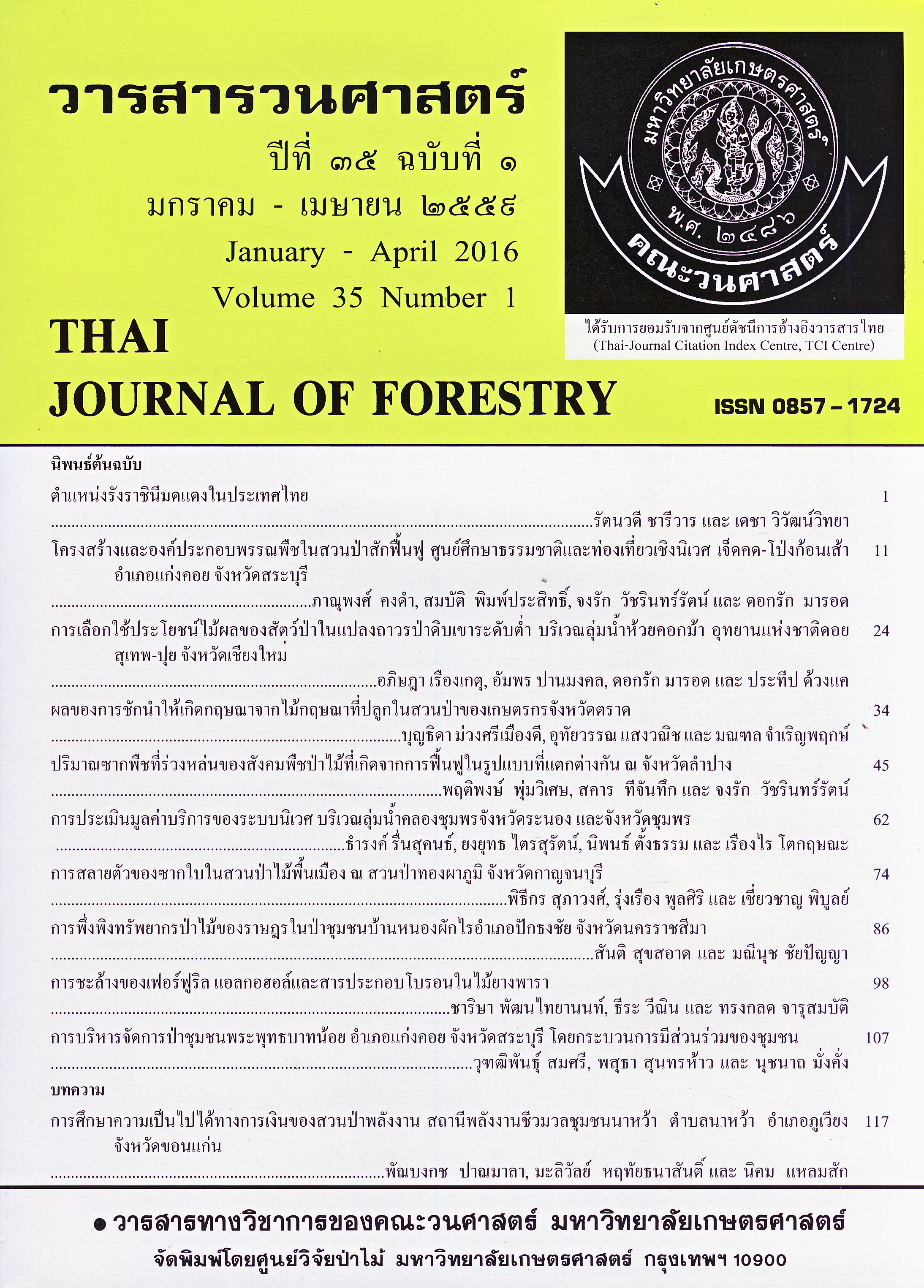การพึ่งพิงทรัพยากรป่าไม้ของราษฎรในป่าชุมชนบ้านหนองผักไร อำเภอปักธงชัย จังหวัดนครราชสีมา
Main Article Content
บทคัดย่อ
กกกก
Downloads
Article Details
ข้าพเจ้าและผู้เขียนร่วม (ถ้ามี) ขอรับรองว่า ต้นฉบับที่เสนอมานี้ยังไม่เคยได้รับการตีพิมพ์และไม่ได้อยู่ในระหว่างกระบวนการพิจารณาตีพิมพ์ลงในวารสารหรือสิ่งตีพิมพ์อื่นใด ข้าพเจ้าและผู้เขียนร่วม (ถ้ามี) ยอมรับหลักเกณฑ์และเงื่อนไขการพิจารณาต้นฉบับ ทั้งยินยอมให้กองบรรณาธิการมีสิทธิ์พิจารณาและตรวจแก้ต้นฉบับได้ตามที่เห็นสมควร พร้อมนี้ขอมอบลิขสิทธิ์ผลงานที่ได้รับการตีพิมพ์ให้แก่วารสารวนศาสตร์ คณะวนศาสตร์ มหาวิทยาลัยเกษตรศาสตร์ กรณีมีการฟ้องร้องเรื่องการละเมิดลิขสิทธิ์เกี่ยวกับภาพ กราฟ ข้อความส่วนใดส่วนหนึ่ง หรือ ข้อคิดเห็นที่ปรากฏในผลงาน ให้เป็นความรับผิดชอบของข้าพเจ้าและผู้เขียนร่วม (ถ้ามี) แต่เพียงฝ่ายเดียว และหากข้าพเจ้าและผู้เขียนร่วม (ถ้ามี) ประสงค์ถอนบทความในระหว่างกระบวนการพิจารณาของทางวารสาร ข้าพเจ้าและผู้เขียนร่วม (ถ้ามี) ยินดีรับผิดชอบค่าใช้จ่ายทั้งหมดที่เกิดขึ้นในกระบวนการพิจารณาบทความนั้น”
เอกสารอ้างอิง
Jarmekorn, S. 1983. Statistical Analysis for Social Science Research. Department of Statistics, Faculty of Science, Kasetsart University, Bangkok. (in Thai)
Kantangkul, P. 2007. Analysis of Factors Affecting the Dependency on Bamboo Resource and Bamboo Plantation of Households at the Royal Project Areas. Thai J. For. 26 (Special issue): 105-117
Krejcie, R.V and D.W.Morgan. 1970. Determining sample size for research activities. Education and Psychlogical Measurement 30: 607-610.
Royal Forest Department. 2008. Ban Nongphakrai Community Forest Project. Ministry of Natural Resources and Environment, Bangkok. (in Thai)
Royal Forest Department. 2010. Promoting Community Forest Management. Ministry of Natural Resources and Environment, Bangkok. (in Thai)
Suntornthai, W. 2004. Straight or Reliability of Measure. Available source: http://tulip. bu.ac.th/wanthna.s/reliability.htm, July 16, 2010. (in Thai)


